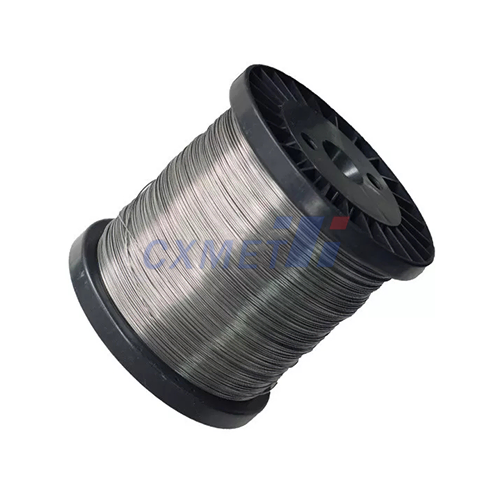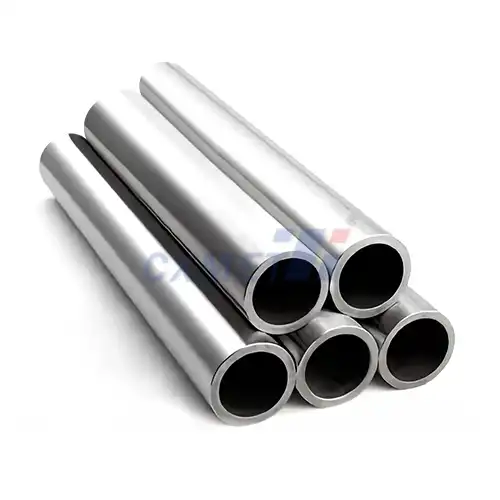- English
- French
- German
- Portuguese
- Spanish
- Russian
- Japanese
- Korean
- Arabic
- Greek
- German
- Turkish
- Italian
- Danish
- Romanian
- Indonesian
- Czech
- Afrikaans
- Swedish
- Polish
- Basque
- Catalan
- Esperanto
- Hindi
- Lao
- Albanian
- Amharic
- Armenian
- Azerbaijani
- Belarusian
- Bengali
- Bosnian
- Bulgarian
- Cebuano
- Chichewa
- Corsican
- Croatian
- Dutch
- Estonian
- Filipino
- Finnish
- Frisian
- Galician
- Georgian
- Gujarati
- Haitian
- Hausa
- Hawaiian
- Hebrew
- Hmong
- Hungarian
- Icelandic
- Igbo
- Javanese
- Kannada
- Kazakh
- Khmer
- Kurdish
- Kyrgyz
- Latin
- Latvian
- Lithuanian
- Luxembou..
- Macedonian
- Malagasy
- Malay
- Malayalam
- Maltese
- Maori
- Marathi
- Mongolian
- Burmese
- Nepali
- Norwegian
- Pashto
- Persian
- Punjabi
- Serbian
- Sesotho
- Sinhala
- Slovak
- Slovenian
- Somali
- Samoan
- Scots Gaelic
- Shona
- Sindhi
- Sundanese
- Swahili
- Tajik
- Tamil
- Telugu
- Thai
- Ukrainian
- Urdu
- Uzbek
- Vietnamese
- Welsh
- Xhosa
- Yiddish
- Yoruba
- Zulu
What is the Tolerance for 3D Printing CNC Titanium Alloy?
3D printing and CNC machining of titanium alloys have revolutionized manufacturing processes across various industries. As these technologies continue to evolve, understanding the tolerance levels for 3D printing CNC titanium alloy has become crucial for engineers and manufacturers. This blog post delves into the intricacies of tolerance in 3D printing CNC titanium alloy, exploring its significance, challenges, and potential solutions.
How does 3D printing affect the tolerance of titanium alloy parts?
3D printing, also known as additive manufacturing, has significantly impacted the production of titanium alloy parts. When it comes to tolerance, 3D printing offers both advantages and challenges compared to traditional manufacturing methods.
One of the primary benefits of 3D printing titanium alloy parts is the ability to create complex geometries that would be difficult or impossible to achieve through conventional machining. This capability allows for the production of lightweight, high-strength components with intricate internal structures. However, the layer-by-layer nature of 3D printing can introduce tolerance issues that need to be carefully managed.
The tolerance of 3D printed titanium alloy parts is influenced by several factors:
1. Layer thickness: The layer thickness in 3D printing directly affects the surface finish and dimensional accuracy of the printed part. Thinner layers generally result in better surface quality and tighter tolerances but increase production time and cost.
2. Thermal effects: Titanium alloys have a high melting point, which can lead to thermal distortion during the printing process. As layers cool and solidify, internal stresses can cause warping or dimensional changes, affecting the final tolerance.
3. Support structures: Complex geometries often require support structures during printing, which can impact the surface finish and dimensional accuracy of the part when removed.
4. Post-processing: Many 3D printed titanium alloy parts require post-processing steps such as heat treatment, machining, or surface finishing to achieve the desired tolerances and properties.
To address these challenges, manufacturers employ various strategies:
1. Optimizing print parameters: Fine-tuning print speed, layer thickness, and other parameters can help improve tolerance levels.
2. Advanced materials: Developing specialized titanium alloy powders for 3D printing can enhance printability and reduce thermal distortion.
3. In-situ monitoring: Using real-time monitoring systems during the printing process allows for early detection and correction of tolerance issues.
4. Hybrid manufacturing: Combining 3D printing with CNC machining (3D Printing CNC Titanium Alloy) can leverage the strengths of both technologies to achieve tighter tolerances.
Understanding the impact of 3D printing on titanium alloy part tolerance is crucial for manufacturers to produce high-quality components that meet stringent industry requirements.
What are the key factors affecting CNC machining tolerance for titanium alloys?
CNC machining of titanium alloys presents its own set of challenges when it comes to achieving tight tolerances. Several key factors influence the machining tolerance of titanium alloy parts:
1. Material properties: Titanium alloys are known for their high strength-to-weight ratio and excellent corrosion resistance. However, these same properties make them difficult to machine. The material's low thermal conductivity leads to heat buildup during machining, which can cause thermal expansion and affect dimensional accuracy.
2. Tool wear: Titanium alloys are highly abrasive and can cause rapid tool wear. As cutting tools degrade, their ability to maintain tight tolerances diminishes, potentially leading to dimensional inaccuracies in the finished part.
3. Cutting parameters: The selection of appropriate cutting speeds, feed rates, and depth of cut is critical for achieving desired tolerances. Improper cutting parameters can result in excessive tool wear, poor surface finish, and dimensional inaccuracies.
4. Machine rigidity: Titanium alloys require high cutting forces, which can lead to deflection in the machine tool or workpiece. A rigid machine setup is essential for maintaining tight tolerances.
5. Coolant strategy: Effective coolant application is crucial for managing heat generation during machining. Inadequate cooling can lead to thermal distortion and affect the final dimensions of the part.
6. Fixturing: Proper workpiece fixturing is essential for maintaining part stability during machining. Inadequate fixturing can result in vibration or movement, compromising tolerance levels.
7. Measurement and inspection: Accurate measurement and inspection techniques are necessary to verify and maintain tight tolerances throughout the machining process.
To address these challenges and achieve tight tolerances when CNC machining titanium alloys, manufacturers employ several strategies:
1. Specialized cutting tools: Using tools designed specifically for titanium alloys, such as those with optimized geometries and coatings, can improve tool life and maintain tighter tolerances.
2. Advanced machining strategies: Techniques such as high-speed machining, trochoidal milling, and cryogenic cooling can help manage heat generation and improve tolerance control.
3. Rigid machine setups: Investing in high-rigidity machine tools and fixturing systems can minimize deflection and vibration during machining.
4. In-process measurement: Implementing in-process measurement techniques allows for real-time monitoring and adjustment of machining parameters to maintain tight tolerances.
5. Optimized cutting parameters: Carefully selecting and fine-tuning cutting parameters based on the specific titanium alloy and part geometry can help achieve and maintain tight tolerances.
6. Temperature control: Implementing strategies to manage workpiece temperature, such as allowing parts to stabilize at room temperature between operations, can help minimize thermal-induced dimensional changes.
By understanding and addressing these key factors, manufacturers can consistently achieve tight tolerances when CNC machining titanium alloy parts, ensuring the production of high-quality components for demanding applications.
How can manufacturers improve tolerance control in combined 3D printing and CNC machining of titanium alloys?
The combination of 3D printing and CNC machining (3D Printing CNC Titanium Alloy), often referred to as hybrid manufacturing, offers unique opportunities for improving tolerance control in titanium alloy part production. This approach leverages the strengths of both technologies to achieve tight tolerances while maintaining the design freedom of additive manufacturing. Here are several strategies manufacturers can employ to enhance tolerance control in this combined process:
1. Design for hybrid manufacturing: Optimizing part designs to account for both 3D printing and CNC machining can significantly improve tolerance control. This may involve incorporating machining allowances in critical areas or designing parts with easily accessible features for post-printing machining.
2. Near-net-shape printing: Utilizing 3D printing to create near-net-shape parts reduces the amount of material that needs to be removed during CNC machining. This approach minimizes the potential for machining-induced distortions and helps maintain tighter tolerances.
3. Strategic machining: Identifying critical features that require tight tolerances and focusing CNC machining efforts on these areas can optimize the manufacturing process. This approach allows for the efficient use of both technologies while ensuring that critical dimensions meet specifications.
4. In-situ machining: Some advanced hybrid manufacturing systems allow for in-situ machining, where CNC operations are performed on the part while it is still attached to the build plate. This approach can help maintain alignment and reduce the potential for fixturing-induced errors.
5. Adaptive machining: Implementing adaptive machining techniques, which involve scanning the 3D printed part before machining and adjusting toolpaths accordingly, can help compensate for any variations in the printed geometry.
By implementing these strategies, manufacturers can leverage the strengths of 3D Printing CNC Titanium Alloy to produce titanium alloy parts with tight tolerances, complex geometries, and optimized performance characteristics. This hybrid approach not only improves tolerance control but also opens up new possibilities for innovative designs and efficient production methods in industries such as aerospace, medical, and automotive.
At SHAANXI CXMET TECHNOLOGY CO., LTD, we take pride in our extensive product range, which caters to diverse customer needs. Our company is equipped with outstanding production and processing capabilities, ensuring the high quality and precision of our products. We are committed to innovation and continuously strive to develop new products, keeping us at the forefront of our industry. With leading technological development capabilities, we are able to adapt and evolve in a rapidly changing market. Furthermore, we offer customized solutions to meet the specific requirements of our clients. If you are interested in our products or wish to learn more about the intricate details of our offerings, please do not hesitate to contact us at sales@cxmet.com. Our team is always ready to assist you.
References:
1. Gibson, I., Rosen, D., & Stucker, B. (2015). Additive Manufacturing Technologies: 3D Printing, Rapid Prototyping, and Direct Digital Manufacturing. Springer.
2. Yadroitsev, I., & Smurov, I. (2011). Surface Morphology in Selective Laser Melting of Metal Powders. Physics Procedia, 12, 264-270.
3. Veiga, F., Suárez, A., & Rodríguez, A. (2020). Machining of Hard-to-Cut Alloys: Titanium and Nickel-Based Alloys. Materials, 13(23), 5590.
4. Klocke, F., Klink, A., Veselovac, D., Aspinwall, D. K., & Soo, S. L. (2011). Turbomachinery component manufacture by application of electrochemical, electro-physical and photonic processes. CIRP Annals, 60(2), 823-846.
5. Flynn, J. M., Shokrani, A., Newman, S. T., & Dhokia, V. (2016). Hybrid additive and subtractive machine tools – Research and industrial developments. International Journal of Machine Tools and Manufacture, 101, 79-101.
6. Hassanin, H., Elshaer, A., Benhadj-Djilali, R., Modica, F., & Fassi, I. (2018). Surface Finish Optimization of Additive Manufactured Metal Parts: A Review. In Micro and Precision Manufacturing (pp. 75-96). Springer.
7. Liu, R., Wang, Z., Sparks, T., Liou, F., & Newkirk, J. (2017). Aerospace applications of laser additive manufacturing. In Laser Additive Manufacturing (pp. 351-371). Woodhead Publishing.
8. Zhu, Z., Dhokia, V., Nassehi, A., & Newman, S. T. (2013). A review of hybrid manufacturing processes – state of the art and future perspectives. International Journal of Computer Integrated Manufacturing, 26(7), 596-615.
9. Shunmugavel, M., Polishetty, A., & Littlefair, G. (2015). Microstructure and Mechanical Properties of Wrought and Additive Manufactured Ti-6Al-4V Cylindrical Bars. Procedia Technology, 20, 231-236.
10. Attallah, M. M., Jennings, R., Wang, X., & Carter, L. N. (2016). Additive manufacturing of Ni-based superalloys: The outstanding issues. MRS Bulletin, 41(10), 758-764.



